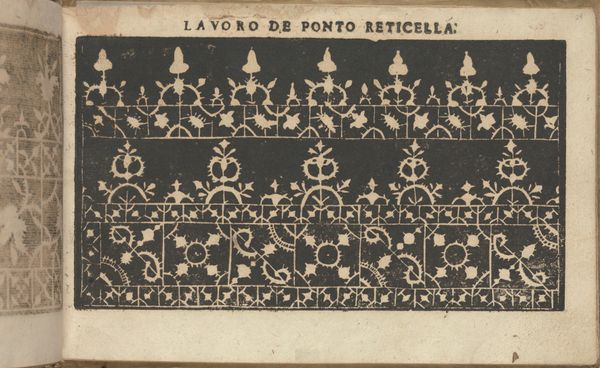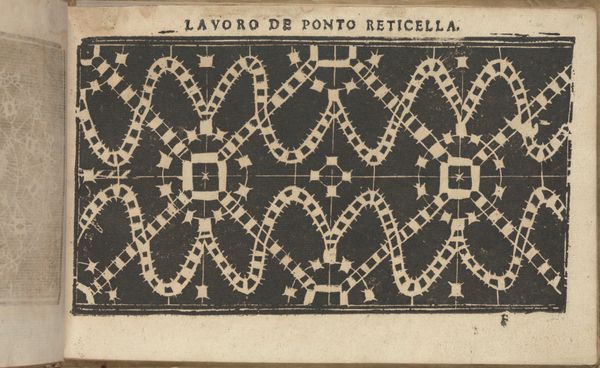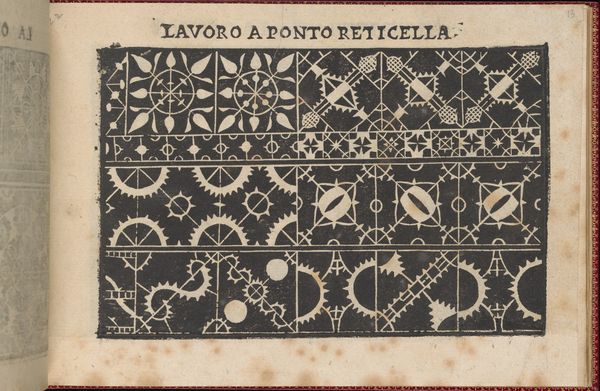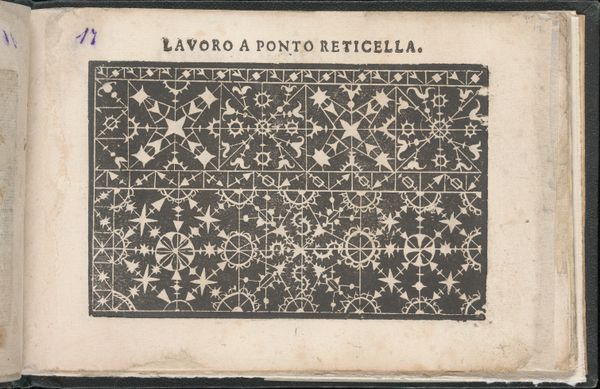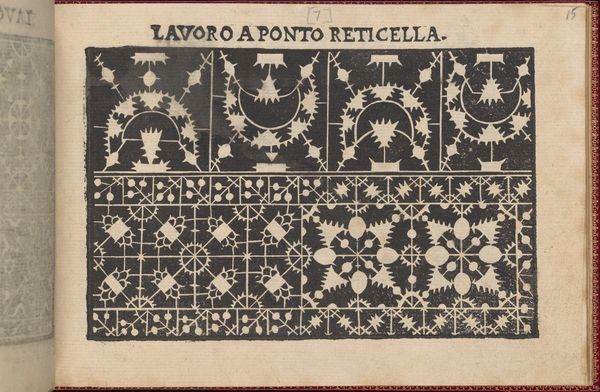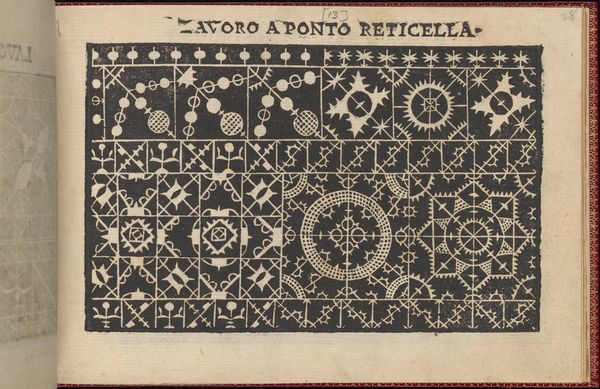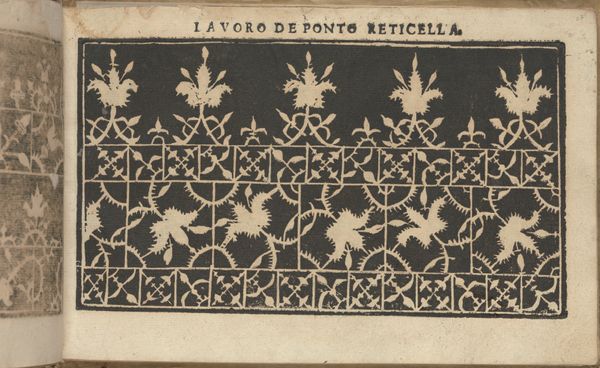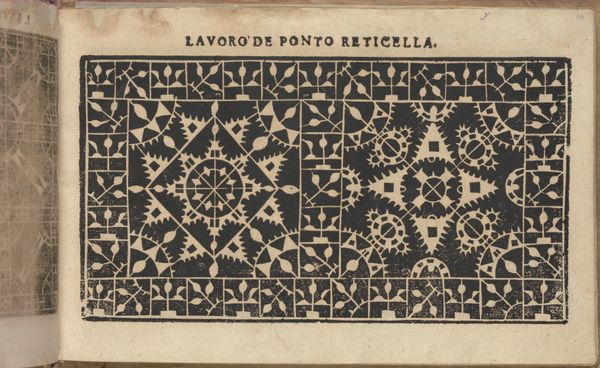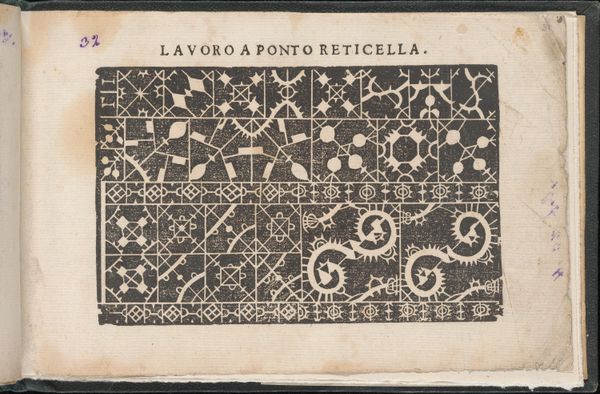
Studio delle virtuose Dame, page 22 (recto) 1597
0:00
0:00
drawing, print, intaglio, paper, engraving
#
drawing
# print
#
intaglio
#
paper
#
11_renaissance
#
geometric
#
line
#
engraving
Dimensions: Overall: 5 1/2 x 8 1/16 in. (14 x 20.5 cm)
Copyright: Public Domain
Editor: This is page 22 from Isabella Catanea Parasole's "Studio delle virtuose Dame," created in 1597. It's an intaglio print, so an engraving on paper. The repeating patterns remind me of textile designs; there's almost a soothing rhythm to the geometric and floral shapes. What catches your eye when you look at this? Curator: You know, it’s funny, looking at this now I'm suddenly craving licorice! All those looping lines and thorny little bits! But beyond my surprising sugar craving, it's fascinating how Parasole distills these complex lace patterns into graphic forms. Think about the skill involved – not just in designing the lace, but in translating it into a print that other women could then use to recreate those patterns. It was, in a way, democratizing design, wouldn’t you agree? Editor: Absolutely. It’s like an early form of DIY instruction! I'd never considered the revolutionary potential. The fact that Parasole was a woman doing this in the late 16th century feels really significant. Curator: Precisely! And while it might look purely decorative, consider the social context. Lace was incredibly valuable, a status symbol. This book offered women a chance to participate in that world, both creatively and economically. Each carefully placed line wasn't just about aesthetics, but a form of empowerment. It's all in those tiny little licorice whips if you look close enough! Editor: I see it now! It gives a totally different meaning to the term "pattern design". Thanks for that incredible insight! Curator: My pleasure. It's these surprising threads that connect the past to our present that keep things fresh. Who knew lace could be so radical, and yummy!
Comments
No comments
Be the first to comment and join the conversation on the ultimate creative platform.
